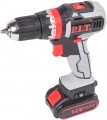Torque is the maximum force with which this model is capable of turning the working nozzle.
Higher torque gives more options, it allows you to cope with complex tasks such as drilling in hard materials, unscrewing stuck screws and nuts, etc. On the other hand, a lot of force requires corresponding power — and this, in turn, affects the dimensions , weight and cost of the tool itself, and also puts forward increased power requirements (mains power, battery capacity or pressure / compressor performance). And for some tasks, excessive torque is basically unacceptable, so for maximum versatility, it is desirable to have
torque control — and this affects the cost even more. And the more steps, the more optimally you can configure the tool to perform a particular type of work. So the general rule is this: when choosing, it is worth considering the specifics of the planned work, and not chasing the greatest working effort.
Detailed recommendations on choosing the optimal torque for different types of tools (see "Device") can be found in special sources. Here we note that it is of key importance primarily for screwdrivers, although it is also given for other types of tools. At the same time, in the “weakest” models, the maximum working force does not exceed 15 Nm, in the most powerful ones it is more than 150 Nm.
Rated battery voltage for which the cordless tool is designed (see "Power Source").
Manufacturers select the battery voltage taking into account the performance characteristics of the tool and the power supply required to achieve these characteristics. In fact, this means that most often this parameter can be ignored at all when choosing. The only exceptions are some specific situations — for example, if the "household" already has a battery of the same company and you want to evaluate its compatibility with the selected model, if the selected tool is supplied without a battery and you want to immediately order a power source for it, or for accurate comparison of batteries by capacity (see below for more details). But after the purchase, the voltage data can also be useful for finding chargers in addition to or to replace the "native" charger.
As for specific values, in many models the voltage
does not exceed 10 V — this is often quite enough. However, much more popular options are
11 to 15 V and
16 to 20 V. There are also
higher voltages, but much less frequently.

